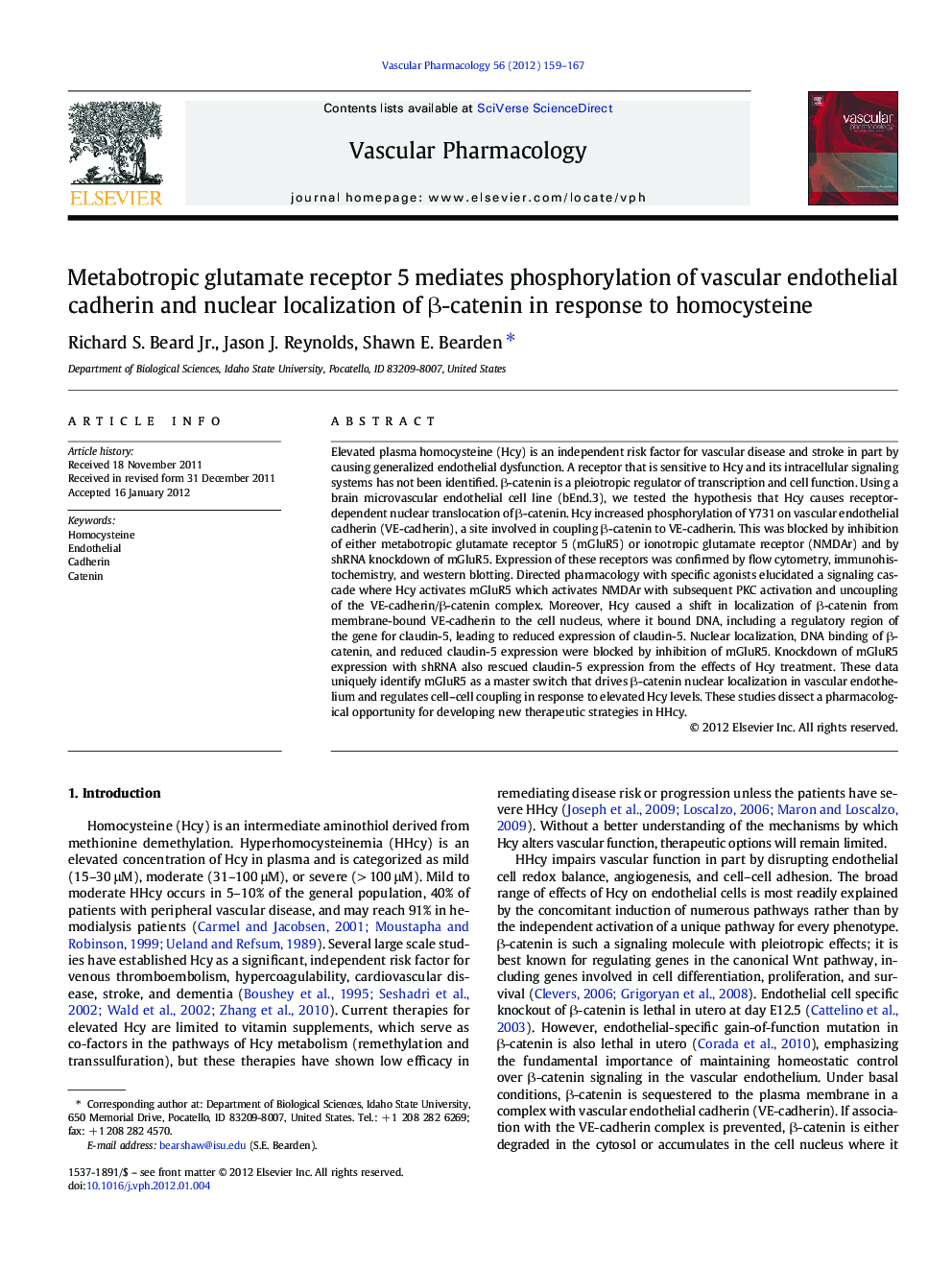| Article ID | Journal | Published Year | Pages | File Type |
|---|---|---|---|---|
| 2574383 | Vascular Pharmacology | 2012 | 9 Pages |
Elevated plasma homocysteine (Hcy) is an independent risk factor for vascular disease and stroke in part by causing generalized endothelial dysfunction. A receptor that is sensitive to Hcy and its intracellular signaling systems has not been identified. β-catenin is a pleiotropic regulator of transcription and cell function. Using a brain microvascular endothelial cell line (bEnd.3), we tested the hypothesis that Hcy causes receptor-dependent nuclear translocation of β-catenin. Hcy increased phosphorylation of Y731 on vascular endothelial cadherin (VE-cadherin), a site involved in coupling β-catenin to VE-cadherin. This was blocked by inhibition of either metabotropic glutamate receptor 5 (mGluR5) or ionotropic glutamate receptor (NMDAr) and by shRNA knockdown of mGluR5. Expression of these receptors was confirmed by flow cytometry, immunohistochemistry, and western blotting. Directed pharmacology with specific agonists elucidated a signaling cascade where Hcy activates mGluR5 which activates NMDAr with subsequent PKC activation and uncoupling of the VE-cadherin/β-catenin complex. Moreover, Hcy caused a shift in localization of β-catenin from membrane-bound VE-cadherin to the cell nucleus, where it bound DNA, including a regulatory region of the gene for claudin-5, leading to reduced expression of claudin-5. Nuclear localization, DNA binding of β-catenin, and reduced claudin-5 expression were blocked by inhibition of mGluR5. Knockdown of mGluR5 expression with shRNA also rescued claudin-5 expression from the effects of Hcy treatment. These data uniquely identify mGluR5 as a master switch that drives β-catenin nuclear localization in vascular endothelium and regulates cell–cell coupling in response to elevated Hcy levels. These studies dissect a pharmacological opportunity for developing new therapeutic strategies in HHcy.
Graphical abstractFigure optionsDownload full-size imageDownload high-quality image (447 K)Download as PowerPoint slide
